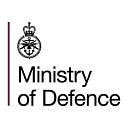From the Highlands to the islands: helicopters at Kinloss
With Scotland’s diverse and challenging landscape, helicopters are an effective way to travel quickly across mountains and islands in medical emergencies. This is why the Aviation Taskforce is an essential part of the military’s support to Scottish health services.
How many helicopters?
Three Puma helicopters have been tasked to Kinloss to support NHS Scotland as part of the UK Government’s response to the Coronavirus. Of the three, one is for medical evacuations; one for transporting supplies; and one is on standby.
How many people?
56 people are working with the helicopters at Kinloss, including engineers, aircrew and support crew.
What will they be used for? Why Pumas?
They will be used to transport supplies, doctors and patients, particularly from rural areas and islands in Scotland. Pumas are ideal for this role because they can land in tight places — unlike Chinook helicopters, which are far larger. This includes small urban sites: one Puma helicopter has even landed in Trafalgar Square!
They also have a low downwash (wind generated by the helicopter blades) so cause less disruption. Despite their small size, they can still fit two stretchers along with a medical crew.
Recently Puma helicopters have been supporting the Western Isles in medical evacuation training.
Squadron Leader Johnny Longland, the Puma Detachment Commander explained:
“We have paramedics from the islands working with our crewmen to look at how they can integrate their equipment with the Puma.
The NHS Scotland and HM Coast Guard teams of paramedics, clinicians and planners were primarily looking at how they can put stretchers in the back of the aircraft and continue to perform their essential care for the patient.”
Mr Gordon Jamieson, Chief Executive of NHS Western Isles and Chair of the Resilience Pandemic Group, said:
“It’s really reassuring to have the asset here and all the associated personnel. Here in the Western Isles we are behind the UK, and in fact behind mainland Scotland, [in coronavirus infection rates] but we are not complacent about that.
We do expect in a few weeks’ time that we will potentially feel the full force of COVID-19 and so we are using this time to be prepared and to plan every single day so that we’re ready when that challenge comes.”
This is one part of the COVID response in Scotland, which also includes mobile testing teams and PPE training and fitting at multiple hospitals by the military.
